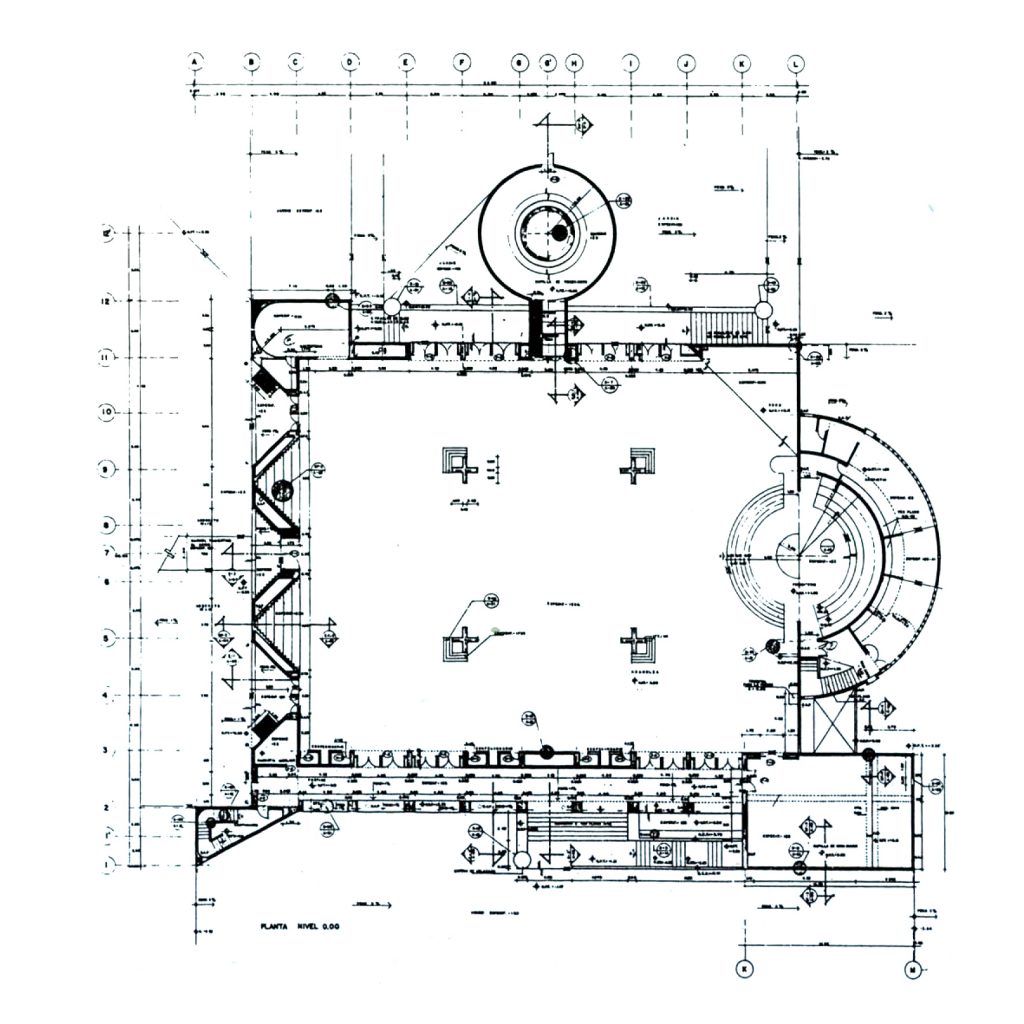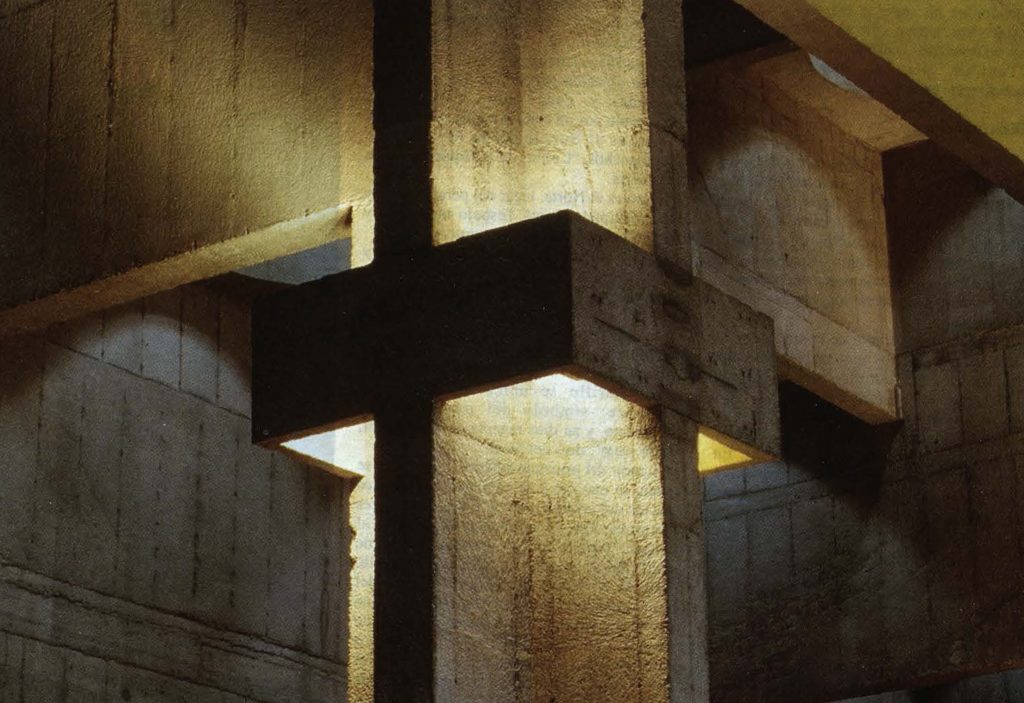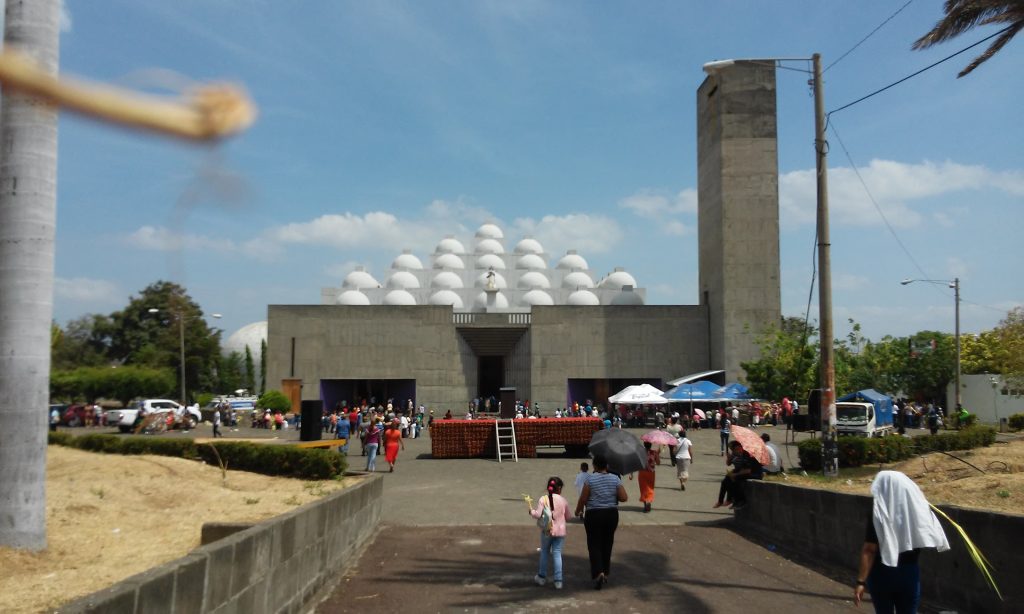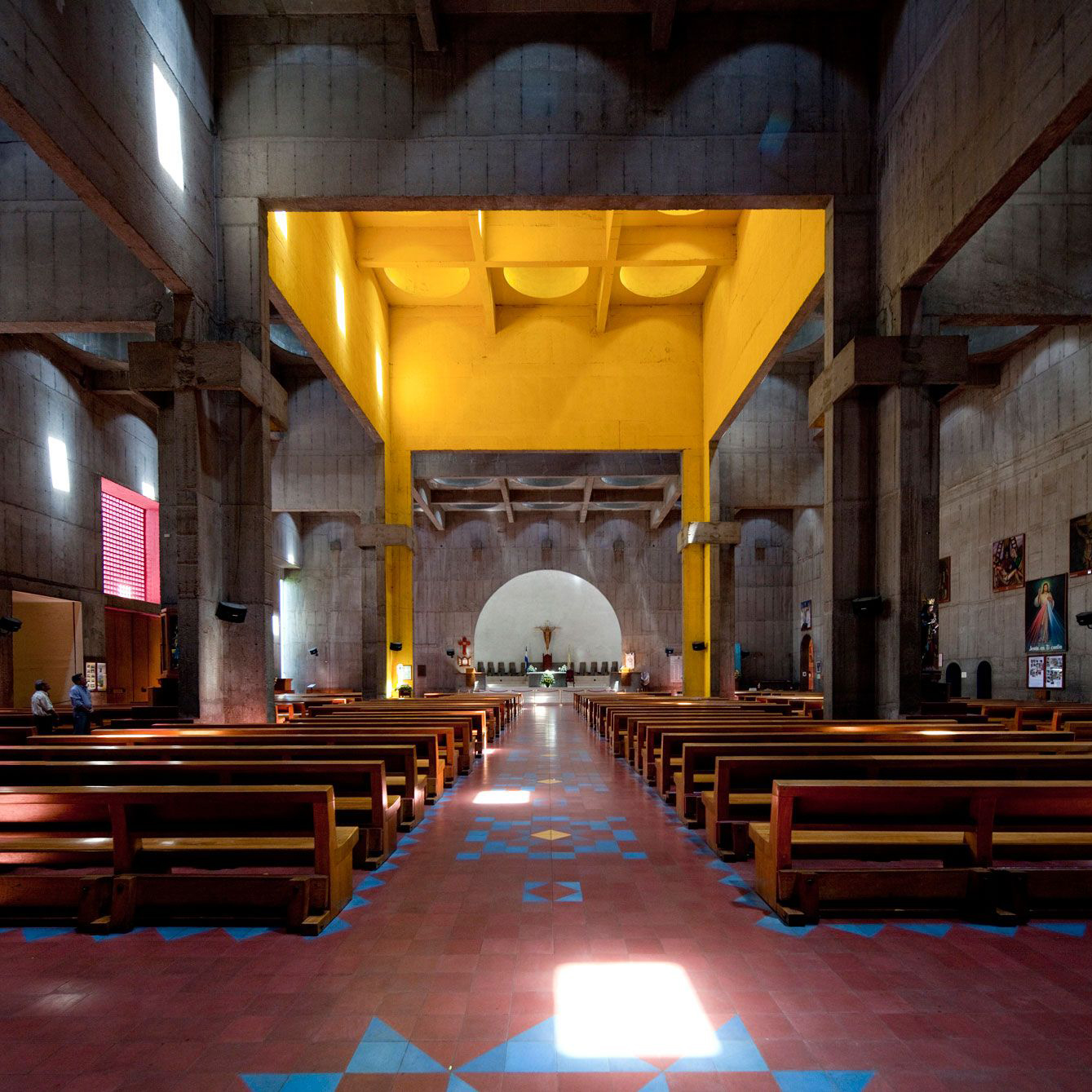“In 1972, the City of Managua was destroyed by an earthquake, as was the Cathedral. The new Cathedral is located in the highest part of the City, on a plot of 120,000 m2. The Cathedral not only replaces the old one, it is also the new center of Managua. The design philosophy responds to the concept in which the contemporary Catholic community has gone from a passive role to an active participation with the ecclesiastical authorities. The physical distance and integration of the altar architecture with the parish priests obeys this concept; It is for this reason that the highest dome is located at the center of the congregation. Beyond monumentalism and ostentation, the design gives the solemnity that the Cathedral needs, only in this way when human being is alone, in small groups or in the middle of a great celebration, can it feel at peace and joy. The hammered concrete responds to the spiritual values and the way of being of a brave country. The building represents the culture and climate of Nicaragua and pays tribute to people who have suffered deeply, but who maintain faith and hope.”
“En 1972, la Ciudad de Managua fue destruida por un terremoto, al igual que la Catedral. La nueva Catedral, está localizada en la parte más alta de la Ciudad, en un terreno de 120 000 m2. La Catedral no sólo substituye a la antigua, también es el nuevo centro de Managua. La filosofía de diseño responde al concepto en el cual la comunidad católica contemporánea ha pasado de un papel pasivo a una participación activa con las autoridades eclesiásticas. La distancia física y la integración de la arquitectura del altar con los párrocos obedece a este concepto; es por esta razón que el domo más alto está localizado al centro de la congregación. Más que monumentalismo y ostentación, el diseño da la solemnidad que la Catedral necesita, sólo de este modo cuando el hombre está solo, en pequeños grupos o en medio de una gran celebración, puede sentirse en paz y alegría. El hormigon martelinado responde a los valores espirituales y a la forma de ser de un país valiente. El edificio representa a la cultura y clima de Nicaragua y brinda homenaje a las personas que han sufrido profundamente, pero que mantienen la fé y la esperanza.”
Ricardo Legorreta


















VIA:
Revista Arquitectura COAM n°311, 1997
